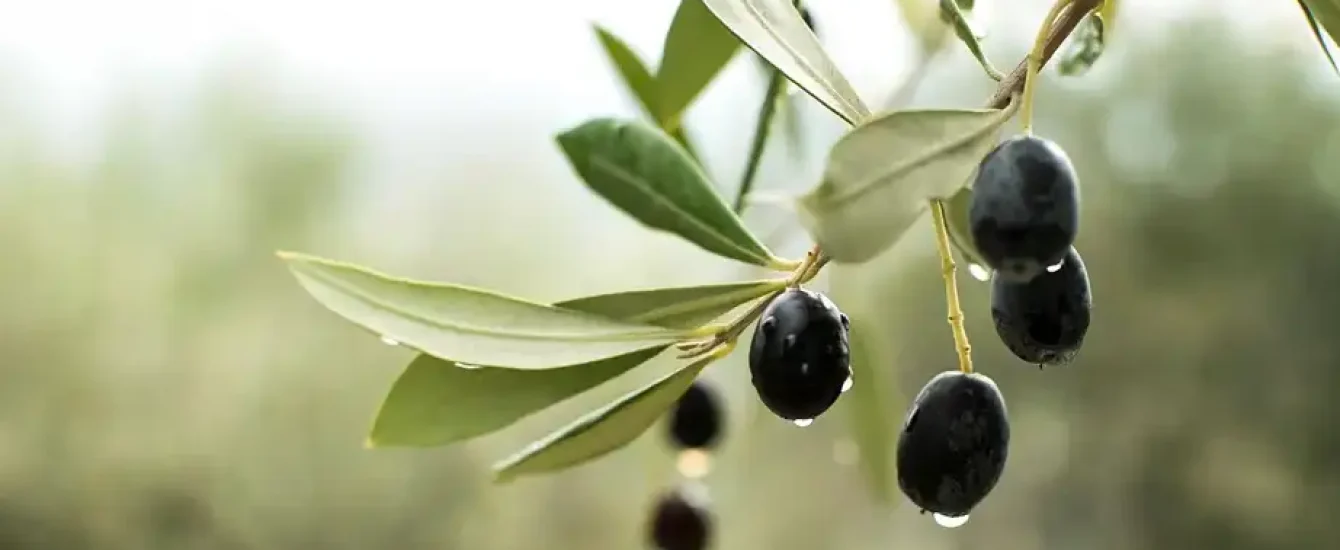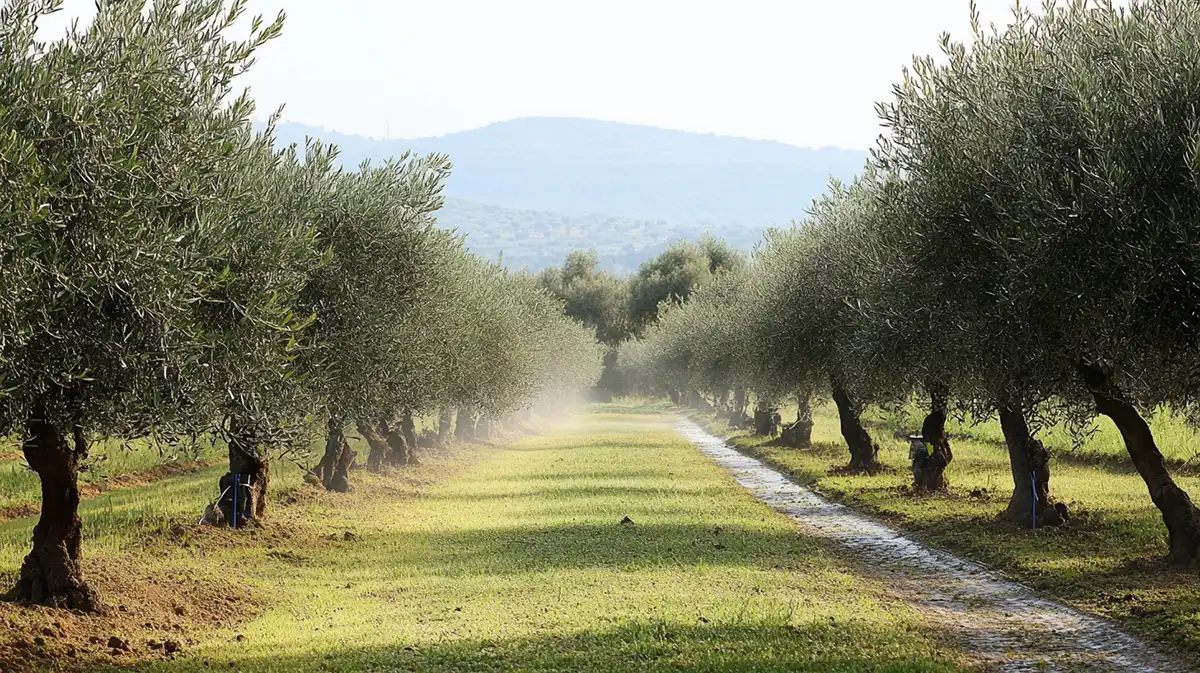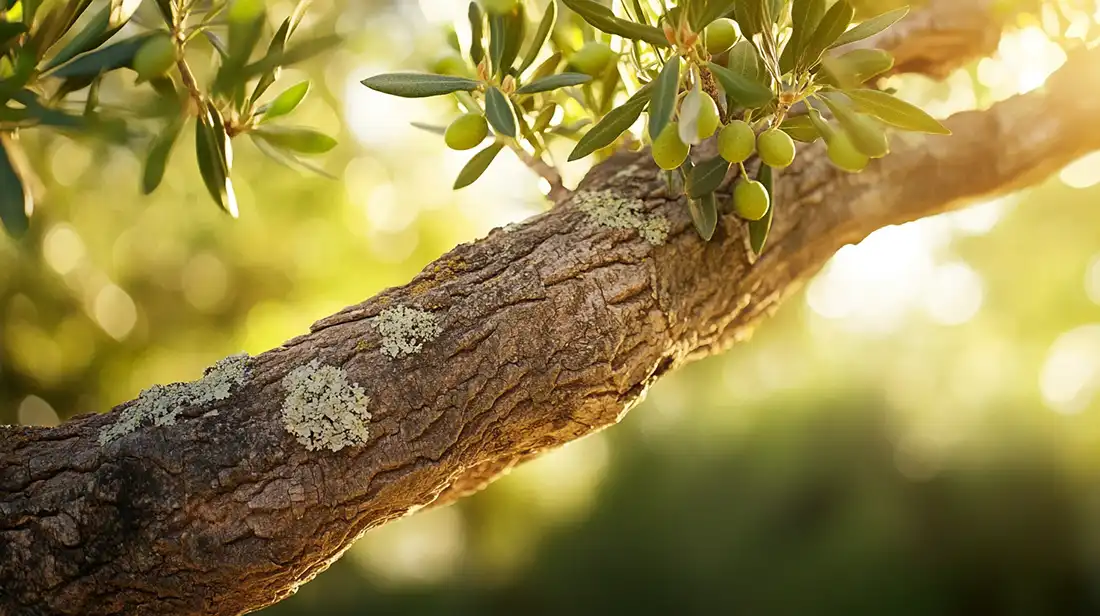Olive Tree Cultivation and Irrigation
Growing olive trees requires careful attention to irrigation.

IRRIGATION
Growing olive trees requires careful attention to irrigation. While olive trees are adapted to dry climates, they still need water for a good harvest. Below are some clear guidelines for watering olive trees, considering different climates, soil types, and farming practices.
1. General Water Needs
Young Trees (1-3 years old): Newly planted olive trees need regular watering to develop their roots. About 40-60 litres of water per tree per week are typically required in hot and dry periods.
– Mature Trees (3+ years old): Once trees are established, they tolerate dry periods better, but for optimal fruit production, they still require water. Depending on climate, soil type, and irrigation method, mature trees usually need between 1000 and 2000 cubic meters of water per hectare per year.
– Super-Intensive Cultivation: Water requirements may be higher in more densely planted groves, which is known as super-intensive farming. This is due to the greater number of trees per hectare, which increases overall water demand.
2. Climate Impact
Dry Climates: Like many Mediterranean areas, olive trees require supplemental irrigation in regions with low rainfall. During dry summers, irrigation is especially important during flowering, fruiting, and fruit development.
– Rainy Climates: In areas with adequate rainfall, olive trees may need little to no irrigation, except during extended drought periods. However, even in rainy climates, careful monitoring is required to avoid over-irrigation or waterlogging.
3. Irrigation Frequency and Amount
Drip irrigation is the most efficient method, delivering small amounts of water directly to the roots, minimising water loss through evaporation. For mature trees, the general recommendation is to provide 40-60 litres per tree each week during dry periods, though this depends on soil moisture retention and climate conditions.
– Seasonal Needs: When trees flower and set fruit, water demand is highest in spring and summer. When trees enter dormancy in winter, irrigation can be reduced or stopped based on rainfall and soil conditions.
4. The Role of Soil Type
Sandy soils drain quickly, meaning they need more frequent irrigation to prevent drying out. However, sandy soils prevent waterlogging and root rot.
Clay soils retain water longer, reducing the need for frequent watering. However, overwatering in clay soils should be avoided, as it can lead to oxygen deprivation for the roots.
Local Adaptations: In both types of soil, water management must be adjusted to the area’s specific needs. For example, sandy soils in dry regions like parts of Spain may require more irrigation than clay soils in wetter regions.
5. Drought Tolerance
Olive trees are resilient and can survive prolonged periods of drought, which often leads to reduced fruit yields. In commercial olive farming, where high yields are essential, it is important to supply water during critical stages such as flowering and fruit growth, even if the trees could technically survive without it.
6. Conclusion
Irrigation is essential for commercial olive production in regions with low rainfall, such as much of the Mediterranean. On average, mature olive trees need about 1000-2000 cubic meters of water per hectare per year, though this can vary depending on factors like soil type and irrigation methods. Drip irrigation is highly recommended to maximise water efficiency and minimise evaporation. Irrigation strategies should be adapted to local climate, soil, and the tree’s development phase to ensure optimal results.

GREECE
Breaking down the daily water needs of mature olive trees:
Assumptions:
– Total annual water requirement: 1000-2000 cubic meters per hectare.
– Depending on planting density, a typical hectare contains 200-300 olive trees.
– Water demand varies throughout the year, with higher demand in spring and summer and lower demand in winter.
Calculation:
- Annual water requirement per tree:
– For 1000 cubic meters per hectare and 250 trees per hectare, this equals 4 cubic meters (or 4000 litres) per tree per year.
– For 2000 cubic meters per hectare, the requirement is 8 cubic meters (or 8000 litres) per tree per year.
- Water requirement per day:
– Assuming irrigation over 180 days during the growing season:
– For 1000 cubic meters per hectare, each tree needs about 22 litres of water per day.
– For 2000 cubic meters per hectare, each tree needs about 44 litres of water per day.
Summary:
– Low water requirement (1000 cubic meters per hectare/year): 20-25 litres per tree per day during irrigation.
– High water requirement (2000 cubic meters per hectare/year): 40-50 litres per tree per day during irrigation.
These estimates depend on local conditions like temperature and soil type. Drip irrigation helps deliver the precise amount of water, preventing waste and ensuring optimal water use.

SPAIN
Olive trees’ water needs in Spain vary depending on climate and cultivation methods. An olive tree typically requires 25-60 litres of water per day during dry periods, especially in hot summer when olives are developing.
Super-Intensive Cultivation
– In super-intensive farming, where trees are planted closer together, water needs are higher due to the increased number of trees per hectare. While super-intensive groves are more productive, they require careful water management to avoid overwatering and ensure good drainage.
Example:
For an orchard with 300 trees per hectare, typical water use is between 2500 and 5000 cubic meters per hectare per year, depending on cultivation intensity and climate. During peak summer months in drier regions like southern Spain, trees may need 20 to 50 litres of water daily. 300 trees per hectare equals 6,000 to 15,000 litres of water per hectare per day.
Conclusion:
– Average water requirement: About 10,000 litres per hectare per day, assuming each tree needs around 30-35 litres daily.
– These figures fluctuate based on seasonal changes, geographic location, local rainfall, and irrigation efficiency.
Using soil moisture sensors can help farmers optimise water usage, especially in regions with unpredictable rainfall. Drip irrigation systems are particularly useful in ensuring precise and efficient water distribution.
